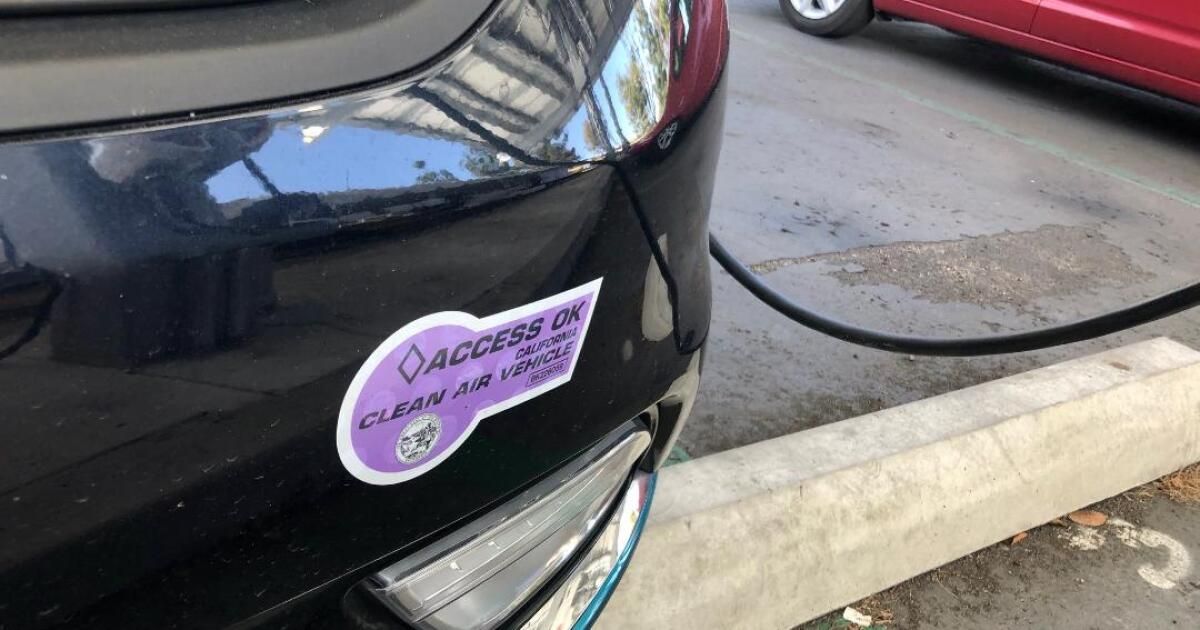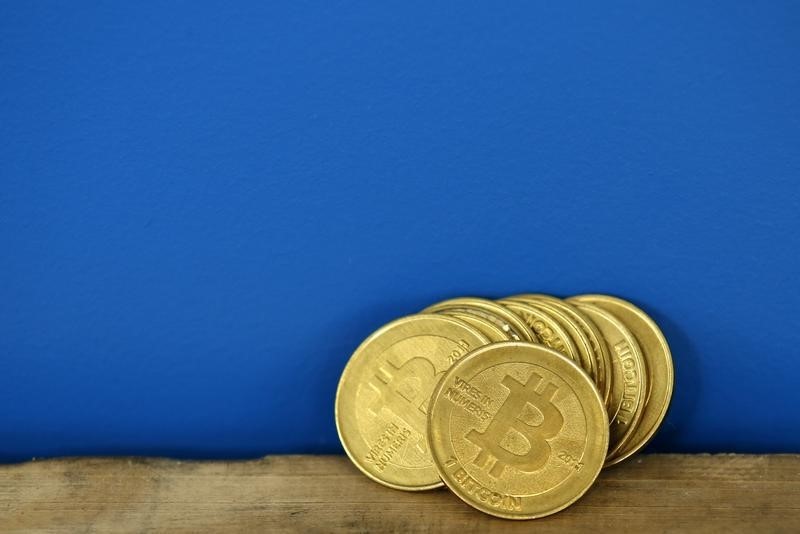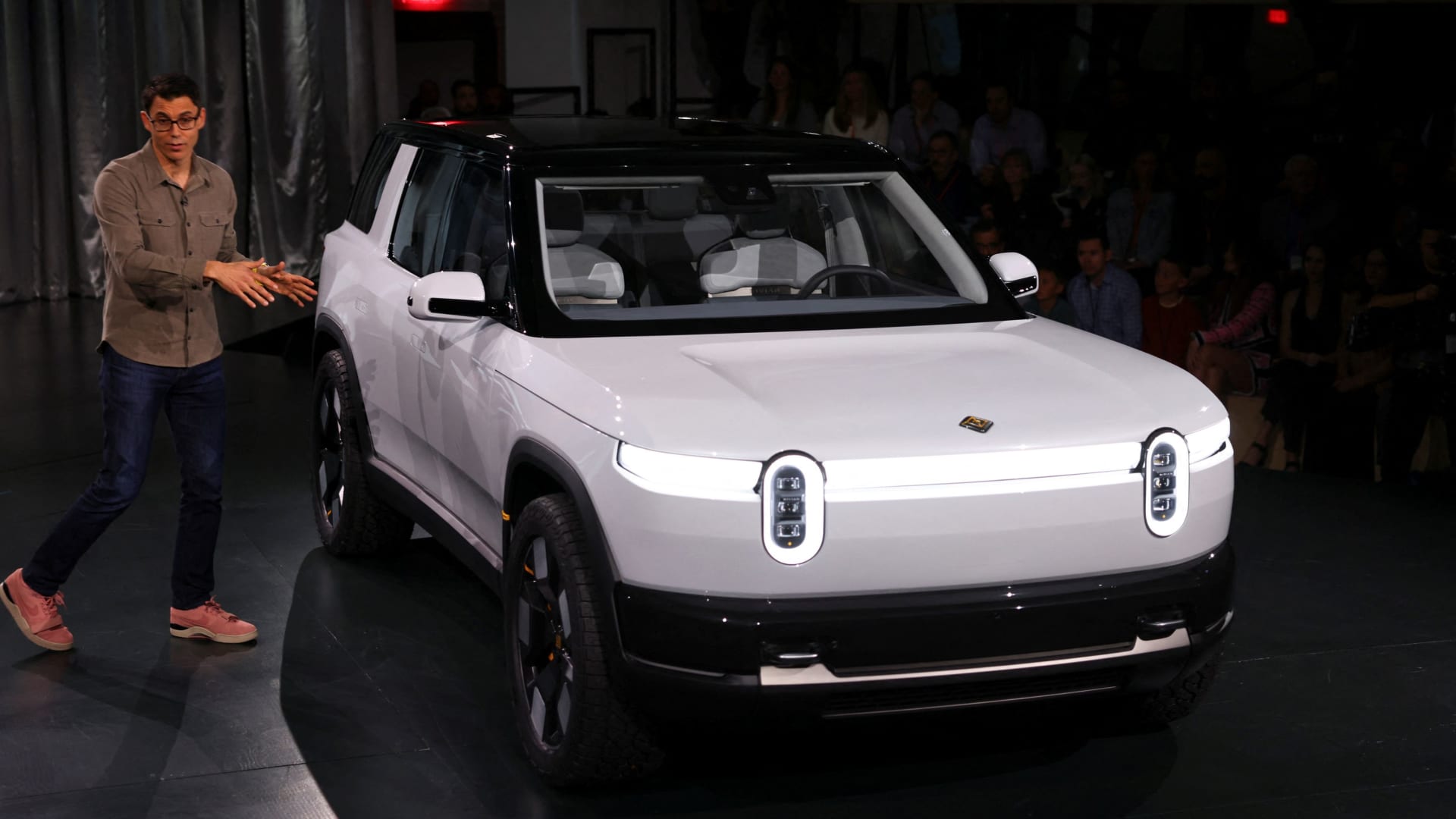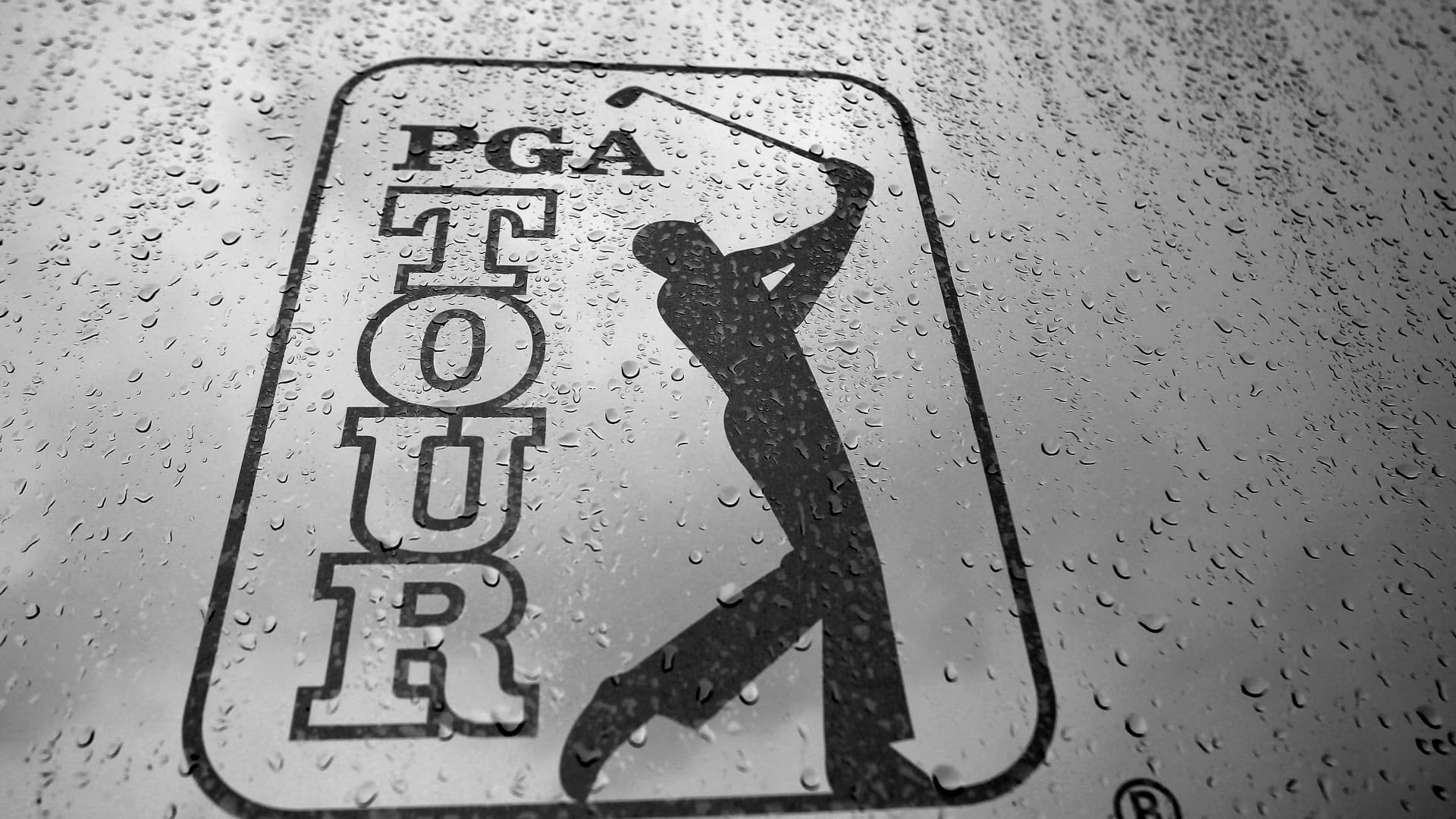During the last two decades, more than one million motorists who have slapped the stickers of “clean air vehicles” in their electric and hybrid cars have been free of navigating in lanes to share without passengers.
But that benefit could be coming to the end on September 30 if Congress does not extend the Clestro Air Vehicle Deca Dadplace Program in California.
For registration:
10:09 AM August 8, 2025Correction: an earlier version of this article declared that the stickers would become invalid on October 2. They will no longer be valid on October 1.
“Clean air vehicles are an intelligent and profitable incentive that has played an important role by promoting the adoption of clean vehicles and zero emissions in California,” reads a statement by Liane Randolph, president of the California Air Resources Board. “But thanks to the failure of the federal Government of Act, this successful program is coming to an end.”
You can still request a decal before August 29, but will become invalid on October 1, according to the Motorized Vehicle Department.
Extending the Decajanías program in California, or any other state, would require the approval of the Congress and the firm of President Trump, said Bill Magovern, director of Policy of the Clean Air Coalition.
“I would certainly not bet on that,” said Magovern.
“It seems that the only deadline to which this Congress responds are the deadlines established by Trump, and I really don't see him get out of his way to extend this program.”
Why this state program needs Congress approval
The federal legislation has allowed the United States Environmental Protection Agency to grant individual drivers in low -emission and energy efficiency cars to use the shared trip or high -occupation vehicle (HOV), LANE.
The objective was to promote the adoption of alternative fuel vehicles and help meet the environmental objectives that included the reduction of fuel consumption and pollution caused by congested highways, according to the United States Department of Energy.
Over time, the states developed incentive programs, choosing to which automobile models give access to Carpool.
“Clearly, in the first days of zero emission cars, Carpool lane decals were an important incentive for some drivers, particularly in places such as the area of Bay and Los Angeles, where there is great congestion,” said Magovern.
California is one of the 13 states that offer this type of incentive program to its residents. Drivers qualified in the gold state include those that lead to electric cars of fuel cells, natural gas or plug -in.
If the program remains an important incentive, “with electric vehicles that exceed 20% of new sales, I think it is open to doubt,” said Magovern.
However, the Plug In America Electric Automobile Defense Group said the program has always been a factor in consumer minds.
“Like many other incentives, the Hov Lane Access through the Clean Air Vehicle Program is one of those things that drivers seek to evaluate the general package of what it is to go electric or obtain the next electric vehicle,” said Alexia Martineau, manager of Plug in America senior policies.
Not renewing the program means that these drivers only have one less reason in the positive column for Going Electric, Martineau said.
In 2023, California had almost 1.3 million records of light service electric vehicles and was the only state that reported such a high number. Behind California was Florida, with approximately 255,000 records, and Texas, with approximately 230,000, according to the United States Department of Energy. (Neither Florida nor Texas offer an incentive program).
In 2015, Congress authorized the California program through a road financing bill, but that authorization is expiring as of September 30.
What is being done to extend the useful life of clean air vehicles?
In an effort to extend the Decomanía Program, the state subjorded Greg Wallis (R-Bermuda Dunes) wrote the 2678 Assembly Law, which would boost the completion date of January 1, 2027.
The GOV. Gavin Newsom of the bill was signed by law last year, but lacks federal approval, without which it becomes debatable.
“Putting the brakes in this program means that as of October 1, 2025, CAV stickers will no longer be valid in California, or in other places in the United States,” said the motorized vehicle department in a statement. “It will be required that all vehicles meet with vehicle occupation published to travel in sharing and salaries are required tolls or risk receiving an appointment.”
According to the California Air Resources Board, there are 519,000 active stickers in the state, said San Francisco Chronicle.
What could this mean for the environmental objectives of the State?
Without the program, drivers will lose access to the shared travel lane, but Magover said that it should also mean less congestion in the Hov lanes.
“Now that California has hundreds of thousands of vehicles of zero emissions, they can take a lot of space in the Hov lanes, and they were destined to encourage people to the trip,” he said.
In addition to drivers who lose access to shared lanes, change could delay the progress that the State has achieved to take more people to alternative fuel vehicles and reduce pollution.
California's goal for 2035 is that all new passenger vehicles sold in the state are zero emissions.
Automobile technology today, such as electric battery, plug -in hybrid vehicles and fuel cells, is helping the State achieve its goal, according to the California Air Resources Board.
In fact, sales in electric vehicles have increased in the state since 2011, with the exception of stagnant sales between 2018 and 2020, according to a report published by UC Davis.
Today, 1 in 4 new cars sold in the state is an EV, Dahlia Garas, from the University's Electric Vehicle Research Center, said in the report.
The University Vehicle Research Center of the University conducted a driver survey from the beginning of the year until June and discovered that almost 30% of the people said that without any state incentive, including the decal, they would not have chosen to buy an electric vehicle, said Scott Hardman, deputy director of the center.
“We are still at a very fragile point in the transition to all vehicles being electric,” said Hardman. “Only 8% of vehicles on the road are electric, and that is not enough to get to the point where vehicles are a social norm.”
The Clean air vehicle decal program is just a way in which the State is working towards its environmental objectives, milestones that have recently been attacked, including the California decades to enforce its own environmental standards.
Recently, the United States Chamber voted to prohibit California for the sale of new gasoline only cars by 2035 and end the state's capacity to establish emission standards for heavy duty trucks and combat SMOG levels.
In Magovern's opinion, these actions are part of the “war” of the Trump administration in the air, the water and the climate of California.
But despite the fact that the shared sticker program was useful to get Californians to buy electric vehicles, Magover argued that times have changed.
“I think you can argue that they have survived their time and that it is more important that the compartment lanes are filled with vehicles that actually have shared trips,” he said.








